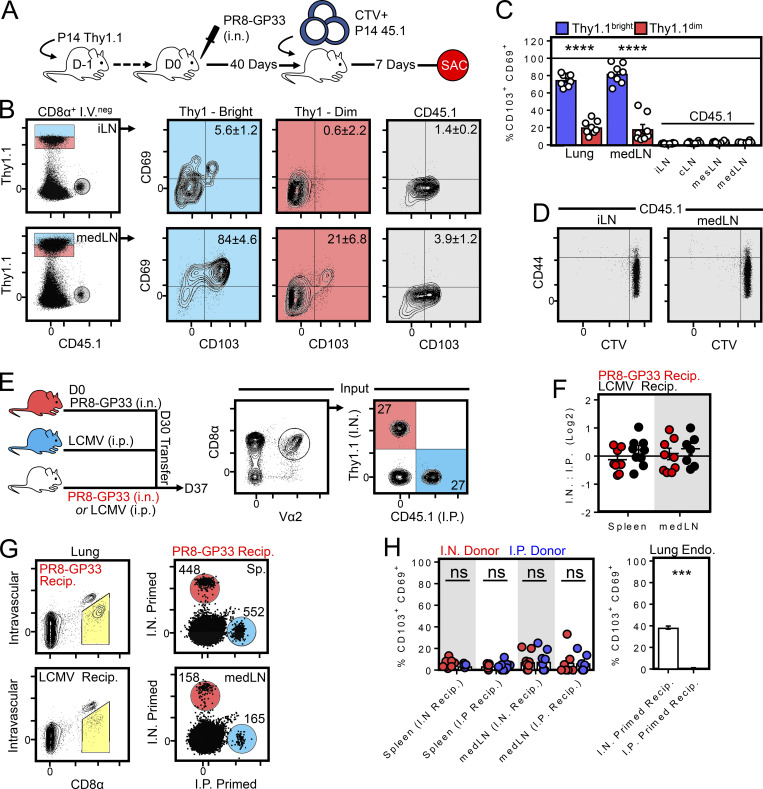Figure 3.
CD69+/CD103+ memory T cells are maintained in an environment lacking sufficient antigen to sensitize naive or memory T cells. (A) Experimental strategy. 106 naive CD45.1+ P14 cells were labeled with CTV and transferred into mice infected 40 d earlier with PR8-gp33 and containing Thy1.1+ memory P14 cells. SAC, sacrifice. (B) Phenotype of Thy1.1+ (memory) and CD45.1+ (recently transferred naive cells). (C) Enumeration of CD103+ CD69+ expression among Thy1.1+ (memory) and CD45.1+ (transferred naive) cells as in B. Bars represent mean ± SEM. ****, P < 0.0001 as determined by unpaired Student’s t test. (D) CTV retention on CD45.1+ cells isolated from iLN or medLN 7 d after transfer. Data in A–D represent eight mice analyzed over two independent experiments. (E) Left: Experimental strategy to test whether i.n. priming predisposed circulating memory CD8+ T cells to adopt TRM markers by migrating into the medLN. Right: Congenically distinct memory P14s generated from i.n. PR8-gp33 (Thy1.1+) or i.p. LCMV (CD45.1+) infection were cotransferred into mice challenged 30 d earlier with i.n. PR8-gp33 or i.p. LCMV. (F) Ratio of i.n. to i.p. challenged donor cells recovered from the i.v.neg fraction of the lung and medLN of i.n. (red circles) or i.p. (black circles) challenged recipients (Recip.). (G) As in F, representative flow cytometry plots displaying the abundance of donor cells recovered from the spleen and medLN of recipient mice. Histograms are concatenated from five mice from one of two independent experiments with similar results (n = 9). (H) Left: CD103 and CD69 expression among i.n. (red circles) or i.p. (blue circles) primed cells recovered from the spleen or medLN of i.n. or i.p. challenged recipient mice. Right: Fraction of endogenous i.v.neg CD8+ T cells isolated from the lungs of i.n. or i.p. challenged recipients that express CD69 and CD103. Bars represent mean ± SEM. ***, P < 0.001 as determined by unpaired Student’s t test; ns, not significant.

